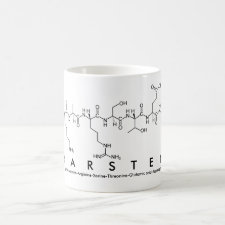
Authors: Vandevelde F, Pantigny J, Pezron I, Gheber LA, Haupt K
Article Title: Nanostructured molecularly imprinted polymer films as synthetic recognition layers.
Publication date: 2008
Journal: International Journal of Nanotechnology
Volume: 5
Issue: (6-8)
Page numbers: 757-768.
DOI: 10.1504/IJNT.2008.018695
Abstract: Hierarchically nanostructured materials that combine two or more levels of structure and exhibit a combination of useful features have gained considerable interest. We describe the generation of surface-bound nanofilaments by nanomoulding on a nanoporous template surface that carry at the same time molecularly imprinted binding sites. Fluorescein was used as a model template for imprinting. The surfaces exhibited specific binding of fluorescein as revealed by fluorescence microscopy. Contact angle and ESEM measurements revealed that surface wetting properties are fine-tunable depending on the polymer and on the nanostructuring. We believe that these materials can potentially be very useful for applications such as biosensors and biochips. Copyright ® 2008 Inderscience Enterprises Ltd
Template and target information: Fluorescein
Author keywords: molecular imprinting, molecular recognition, Nanostructure, NSOM, Surface wetting, synthetic receptor, thin film, nanotechnology, nanofilaments, nanomoulding, nanoporous surfaces, Biosensors, biochips



Join the Society for Molecular Imprinting

New items RSS feed
Sign-up for e-mail updates:
Choose between receiving an occasional newsletter or more frequent e-mail alerts.
Click here to go to the sign-up page.
Is your name elemental or peptidic? Enter your name and find out by clicking either of the buttons below!
Other products you may like:
 MIPdatabase
MIPdatabase









